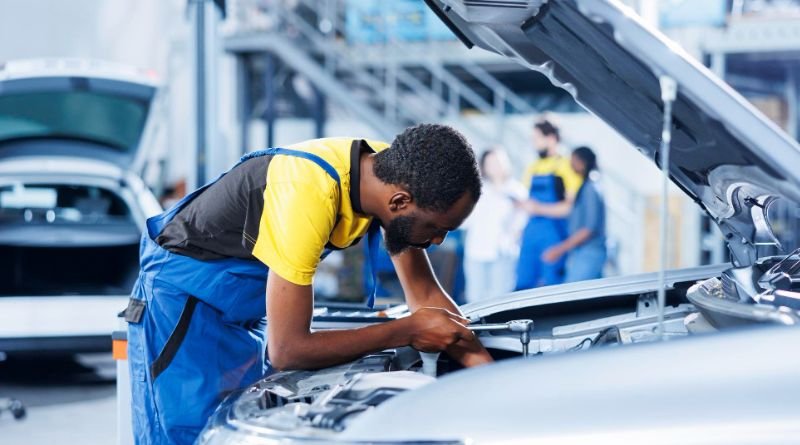The automotive industry has always thrived on motion, literal and metaphorical. From the roar of muscle cars barreling down open highways to the quiet retirement of rusted sedans hauled away for parts, vehicles live full and varied lives. But what happens at the end, and the very beginning, of those journeys is where things get interesting.
Two sides of the same coin, the business of selling junk cars and transporting high-end vehicles may seem worlds apart, but they’re more connected than most realize. Each plays a vital role in maintaining the automotive ecosystem. One clears the path for new beginnings, the other protects and preserves rare automotive gems. In a fast-changing world, their shared mission is clear: keep things moving, safely and efficiently. That same spirit fuels companies like JP Logistics, Los Angeles, CA, where precision meets purpose in the business of vehicle transportation.
A Look at the Industry from the Inside Out
The car industry isn’t just about the vehicles you see on the road; it’s about everything happening behind the scenes. Junk car services help declutter our driveways, remove environmental hazards, and ensure usable materials are salvaged and reused. At the same time, auto transport companies work tirelessly to handle delicate, high-value vehicles with white-glove care, moving them across states or even across countries.
Both services cater to a niche, but a growing, audience. On one end, the demand for sustainability is pushing more car owners to think twice before letting a vehicle rot in their garage. On the other end, car collectors and luxury car owners expect nothing less than perfection when it comes to the transportation of their prized assets. Whether the job involves towing away a weathered sedan or loading a six-figure sports car into an enclosed carrier, the stakes are high in both scenarios.
For sellers trying to offload aging vehicles, there’s peace of mind in knowing it won’t go to waste. Those parts may live on in another engine or help reduce the need for manufacturing new components. Take a look at how things are done on the byot auto parts in baton rouge, la site, and you’ll see just how streamlined and respectful the process can be.
Different Ends, Shared Standards
It’s easy to assume that high-end transport and junk car services have little in common. But dig deeper and you’ll see parallels. Both require logistics, specialized equipment, customer coordination, and careful attention to safety regulations. Both also work under tight timelines and often deal with emotionally invested customers, whether it’s someone parting with a car they’ve owned for decades or someone anxiously awaiting their exotic car delivery.
What they also share is the need for trust. Trust that your vehicle, no matter its condition, is in good hands. Trust that the people handling the job know exactly what they’re doing. And trust that, at the end of the day, the service will be as smooth and stress-free as promised.
From a business perspective, both industries are adapting to the times. Online booking, real-time tracking, digital paperwork, and better transparency are all being adopted at a fast clip. What was once a handshake agreement at a salvage yard is now a tech-powered service experience. Likewise, luxury transport has evolved from simple flatbeds to meticulously timed multi-stop operations with GPS tracking, climate-controlled containers, and tailored insurance policies.
What Happens After the Hand-Off
In the case of junk car sales, the journey doesn’t end when the tow truck pulls away. In many cases, vehicles are taken apart with precision, not just crushed for scrap. Usable parts, alternators, transmissions, radiators, and wheels are cataloged and sold, feeding a growing DIY market of car enthusiasts, mechanics, and budget-conscious drivers. Even non-functioning components can be recycled for metal, reducing waste and the environmental burden of car production.
Luxury vehicles, meanwhile, often pass through a series of hands: auction houses, collectors, restorers, or even museums. The transportation stage is crucial; it’s the bridge between seller and buyer, between restoration and reveal. Ensuring that the car arrives in perfect condition is not just a nice-to-have; it’s a requirement. The stakes are high, and the margin for error is virtually nonexistent.
Why This Matters More Than Ever
In a world increasingly driven by sustainability and technology, the roles of junk car removal and specialty transport are more relevant than ever. Retiring a vehicle responsibly helps reduce the pressure on landfills and supports the circular economy. Transporting a collectible car safely ensures its preservation for future generations, as automotive history becomes just as treasured as art or architecture.
These industries also highlight how the car world is not just about speed or horsepower; it’s about systems, logistics, and stewardship. It’s about knowing when a vehicle’s time is up and when it deserves to be handled with extra care.
If you’re parting ways with an old ride or awaiting the arrival of a new showpiece, you’re part of this larger, interconnected ecosystem. You’re keeping the wheels turning, literally and figuratively, for an industry that thrives on movement, innovation, and care.
